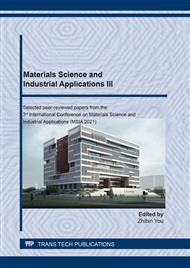p.147
p.152
p.157
p.163
p.172
p.178
p.186
p.195
p.201
Research on Finite Element Method of Hot Forming of High Strength Steel Sheet
Abstract:
The finite element simulation technology can provide strong support for the optimization of processing technology and the treatment of detailed problems in the processing process. Two finite element methods applied to hot forming of high-strength steel plates are introduced, namely the incremental method and the deformation method. Two methods are used for simulation calculations. The finite element simulation based on incremental theory has high accuracy and requires more complete mold and process information. It is mainly used in the middle and late stages of product and mold design. And the finite element simulation based on deformation theory have fast calculation speeds and are mainly used in the early stages of product and mold design. Both types of methods have high practical value.
Info:
Periodical:
Pages:
172-177
Citation:
Online since:
May 2021
Authors:
Price:
Сopyright:
© 2021 Trans Tech Publications Ltd. All Rights Reserved
Share:
Citation:


